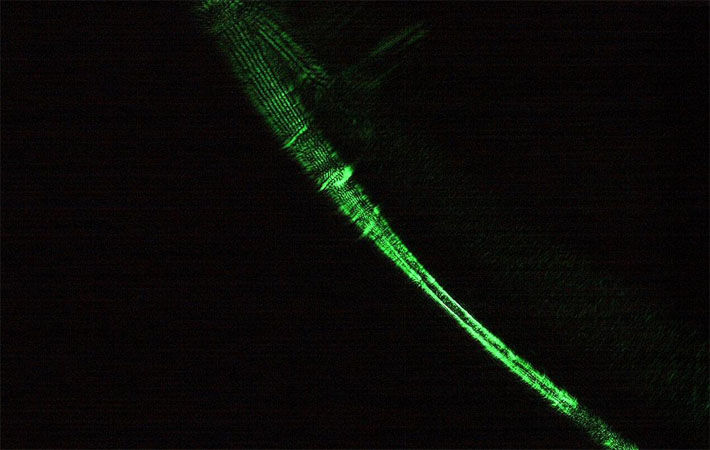
This research may lead to new flexible electronic devices, such as wearable electronic materials. Owing to its high flexibility and strength, spider silk has received much attention for uses ranging from medicine to aerospace applications. By combining natural silk, such as spider silk, with synthetic conductive polymers, researchers can produce textiles with conduction, light emission, and photovoltaic functions. It is also possible to create biocompatible materials that can be used in regenerative medicine and biomedical materials, the university said in a press release.
“We've taken the next step from previous research efforts by utilising the strongest known natural fibre - bagworm silk," explained professor Hiromasa Goto.
“In this study, the research team combined polyaniline, a conducting polymer that can be easily synthesised, with bagworm silk obtained from a bagworm nest. The composite fibres obtained from the silk and polyaniline were 2 microns in diametre and acted as optical waveguides. The investigators demonstrated that green laser light propagates along these fibres, while remaining confined within each fibre. To determine the magnetic properties of the material, the investigators performed superconducting interference device (SQUID) measurements. The results revealed that the composite fibres can act as paramagnets: the fibres become magnetised when placed in an external magnetic field. By applying the bagworm silk/polyaniline composite in a field-effect transistor device, the research team also confirmed that the composite fibre is suitable for use in textile transistors,” the release added.
"With the mass production of bagworm silk, these fibres can be developed for various practical applications—for example, as electromagnetic inference shields, conductive textile wires, and anticorrosion textiles,” added Goto.
This successful production of a strong conductive fibre comprising bagworm silk and polyaniline will pave the path towards the application of these fibres in a variety of fields such as tissue engineering and microelectronics.
Fibre2Fashion News Desk (RR)